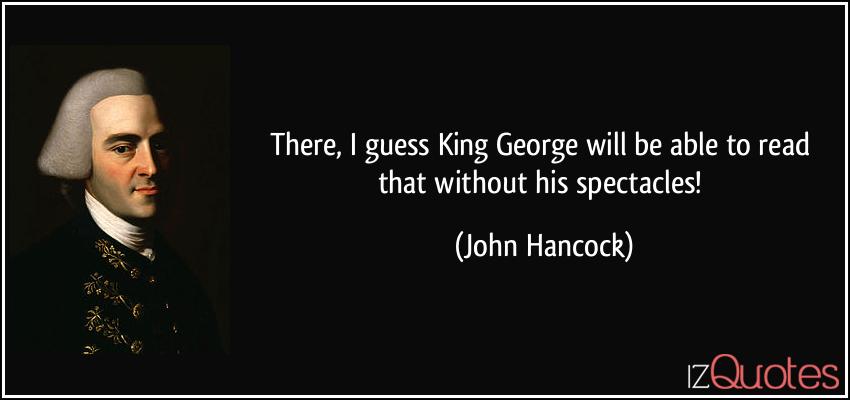John Hancock is the most well-known signer of the Declaration of Independence. He served as president of the Second Continental Congress. Later, Hancock served as the first governor of the Commonwealth of Massachusetts.
John Hancock: Early Years and Family
John Hancock was born in Braintree, Massachusetts. When his father died, Hancock’s uncle Thomas raised him. Thomas Hancock was a wealthy merchant.
After he graduated from Harvard, he worked for his uncle. When his uncle died, John inherited his lucrative export business. However, Samuel Adams often criticized Hancock for his lavish lifestyle.
Hancock married Dorothy Quincy in 1775. They had two children. Unfortunately, neither of them survived to adulthood.
The Road to Revolution
In 1765, John Hancock served as a Boston selectman. The next year he won election to the Massachusetts legislature. During this time, the British Parliament imposed a series of heavy taxes. The colonists opposed these taxes because they did not have representation in Parliament. Anti-British sentiment led to the American Revolutionary War.
Hancock came into direct conflict with the British in 1768. British customs officials seized one of his merchant ships. They claimed Hancock illegally unloaded cargo without paying the required taxes. The seizure of his ship led to angry protests. This was the first of several clashes with Britain. Boston became the center of the American Revolution.
John Hancock | A Wanted Man
In 1774, Massachusetts elected John Hancock as president of the colony. They then declared itself an autonomous government. In December, Massachusetts appointed Hancock as a delegate to the Second Continental Congress, which served as the American Revolution’s governing body.
Hancock’s revolutionary activities made him a target for British authorities. In 1775, he and fellow patriot Samuel Adams avoided arrest in Lexington, Massachusetts.
John Hancock’s Famous Signature
In May 1775, the Continental Congress elected John Hancock as president of the Congress. The next month, Congress chose George Washington as commander of the Continental Army. During eight years of war, Hancock used his wealth to fund the army and revolutionary cause.
On July 4, 1776, Congress adopted the Declaration of Independence. It declared the 13 American colonies free from British rule. The declaration outlined individual rights. As president of the Continental Congress, Hancock was the first signer of the Declaration of Independence. His prominent signature became famous. Today, the term “John Hancock” is synonymous with “signature.”
John Hancock’s Governorship and Later Years
Hancock resigned from the Continental Congress in 1777. He entered military service. He led 5,000 Massachusetts soldiers to recapture Newport, Rhode Island, from the British. Although the mission failed, Hancock stayed a popular figure. He went on to help frame the Massachusetts Constitution. After its adoption in 1780, Massachusetts elected Hancock governor of Massachusetts.
During his tenure as governor, inflation plagued Massachusetts. Many farmers defaulted on loans and ended up in prison. Suffering from gout, Hancock resigned in 1785. The following year, Massachusetts farmers rebelled. The rebellion ended in early 1787, and Massachusetts reelected Hancock as governor. He did not attend the 1787 Constitutional Convention in Philadelphia. However, he presided over his state’s ratification of the U.S. Constitution. He gave a speech in favor of ratification.
In 1789, Hancock was a candidate in the first U.S. presidential election. Unfortunately, he only received four electoral votes out of 138. George Washington became president, and John Adams became vice president.
Hancock remained governor of Massachusetts until his death at age 56 on October 8, 1793.
